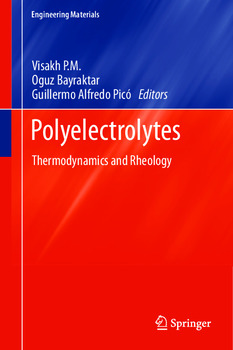Thermodynamic and rheological properties of polyelectrolyte systems

Date
2014Author
Jimenez Kairuz, Alvaro Federico
Olivera, María Eugenia
Alovero, Fabiana del Lujan
Ramirez Rigo, Maria Veronica
Manzo, Rubén Hilario
Metadata
Show full item recordAbstract
The chapter provides a treatment of the interaction between acidic or
basic polyelctrolytes (PE) and ionizable organic molecules (selected model drugs)
in aqueous environments, in terms of acid-base reactions. The electrostatic
attraction between the ionized pending groups of the PE and the organic ions
yields a high proportion of counterionic condensation with affinity constants in the
range of 103 to 105. The high proportion of counterionic condensation in PE-drug
aqueous dispersions determines many of the particular properties of these systems
such as the effects of addition of electrolytes and non-electrolytes, the kinetic of
drug release under different conditions, the raise of compatibility of low solubility
drugs, the increase of chemical stability and the rheological behavior. The aqueous
systems of acidic PE are characterized by their building viscosity capacity. Flow
curves of PE-drug systems reflex the behavior of model PE-Na systems. However,
complexes of a set of model drugs under similar conditions exhibit a wide range of
viscosities. The determination of the kinetic of water sorption of PE-drug com-
plexes in solid state provides valuable complementary information related to their
swelling capacity. Rheology of PE-drug aqueous dispersions as well as their
swelling capacity are relevant properties in the fields of mucoadhesivity and drug
release.




